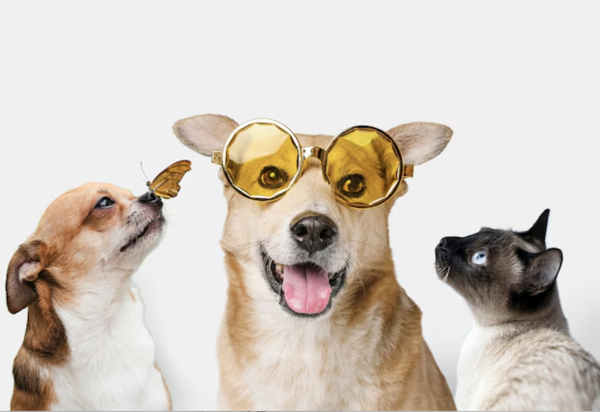Camouflage is a fascinating way to blend into surroundings, but how effective is it against animals? This question becomes particularly intriguing when considering gray digital camouflage—a popular choice for hunters, soldiers, and nature enthusiasts. To answer this, we need to dive into the science of animal vision, camouflage principles, and how they interact.

Animals don’t see the world as humans do. Their vision depends on the structure of their eyes, particularly the rods and cones in their retinas.
Rods and Cones:
Rods are sensitive to light and help animals see in the dark, while cones detect colors. Most animals have fewer cones than humans, limiting their ability to see a full range of colors. For instance:
Deer: Dichromatic vision (sees blue and green but not red).
Dogs and Cats: Limited color perception, mainly shades of blue and yellow.
Color Perception:
Many animals can’t distinguish gray from other neutral tones. However, some, like birds and certain insects, can see ultraviolet (UV) light, giving them a different view of camouflage patterns.
Field of Vision:
Predatory animals like wolves have forward-facing eyes for depth perception. Prey animals, like rabbits, have side-placed eyes for a wide field of vision, helping them detect camouflaged predators.
Gray digital camouflage is a pattern made up of pixelated shades of gray. It’s designed to disrupt outlines and blend into various environments, such as rocky terrains or urban settings.
Why Gray?
Gray is a neutral color that mimics the lack of strong hues in many natural backgrounds, like rocks, tree bark, or cloudy skies.
Digital Pattern:
The pixelated design breaks up the human silhouette, making it harder for animals to recognize as a threat. This principle works well in environments where animals rely on motion or shape detection rather than color.

The effectiveness of gray digital camo depends on the animal’s vision and behavior:
Predators:
Animals like lions and wolves may rely more on movement than color. Gray camo could be effective if the wearer stays still.
Birds:
Birds often see more colors than humans, including UV light. This makes them more likely to notice patterns that seem invisible to mammals.
Deer and Ungulates:
These animals are less sensitive to fine details but can detect movement. A gray camo wearer who stays motionless is likely to remain unnoticed.
Animals themselves are masters of camouflage, offering clues to design effective patterns:
Chameleons: Change skin color to match their surroundings.
Tigers: Use striped patterns to blend into tall grass.
Cuttlefish: Adapt their skin texture and color instantly for underwater stealth.
By mimicking these natural adaptations, gray digital camo takes inspiration from wildlife’s survival strategies.
The effectiveness of gray digital camo also depends on the environment and behavior of the wearer.
In Rocky Terrains:
Gray camo blends seamlessly with stones and shadows. This works well for evading predators or approaching prey in mountainous areas.
In Forests:
While less effective in green-heavy environments, gray can still provide concealment in shaded or cloudy conditions.
In Urban Settings:
The neutral tones of gray digital camo make it ideal for blending into concrete, metal, and other man-made structures.
Researchers have conducted experiments to test camouflage against various animals:
Testing Motion: Studies show that animals are more likely to detect moving objects, even if camouflaged. Staying still enhances camo effectiveness.
Simulating Vision: By replicating animal vision through filters and software, scientists test how different camo patterns appear to various species.
Some colors and patterns exploit the blind spots in animal vision:
Red and Orange: Many mammals can’t see these colors, making them effective in safety gear for hunters (visible to humans but not deer).
UV Reflective Patterns: Some camo avoids reflecting UV light to stay hidden from birds and insects.
Gray digital camo doesn’t rely on color but on disrupting outlines, making it a versatile option.
Gray digital camo isn’t just for military use; it’s also widely adopted by:
Hunters: To approach animals like deer undetected.
Wildlife Photographers: To blend into natural surroundings for capturing candid shots.
Outdoor Enthusiasts: For hiking or camping in areas where animal encounters are possible.
Animal reactions to camo depend on their instincts and sensory perceptions:
Predators: Use vision and smell to locate prey. Camo that disrupts shape works well.
Prey Animals: Often rely on motion detection. Staying still is crucial when using camo.
While gray digital camo is effective in many scenarios, its success depends on:
The Environment: Works best in neutral or gray-toned habitats.
Animal Behavior: Effective against animals that rely more on motion and shape than color.
For environments with vibrant colors, other camo patterns may be more suitable.
Gray digital camouflage leverages the principles of concealment and disruption to evade detection by animals. While not foolproof, it’s an effective tool when paired with an understanding of animal vision and behavior. Whether for hunting, wildlife observation, or military use, gray digital camo continues to be a reliable choice in blending into the wild.
animal tags: Animals
We created this article in conjunction with AI technology, then made sure it was fact-checked and edited by a Animals Top editor.